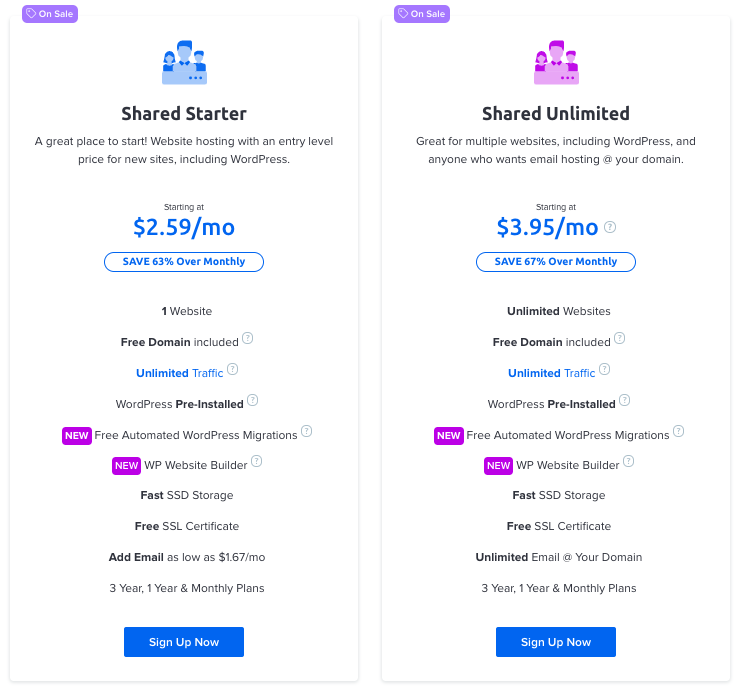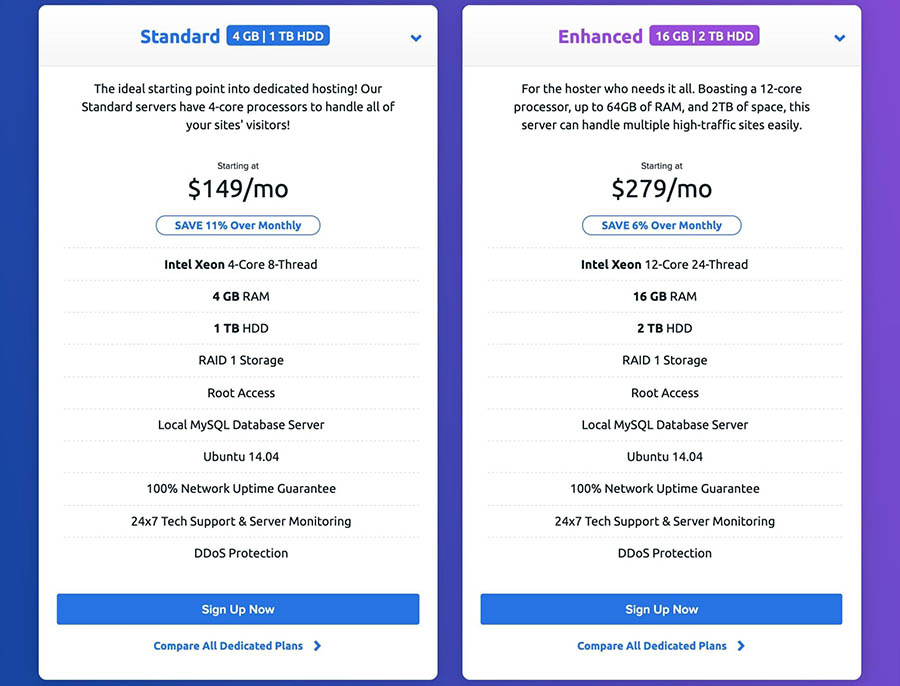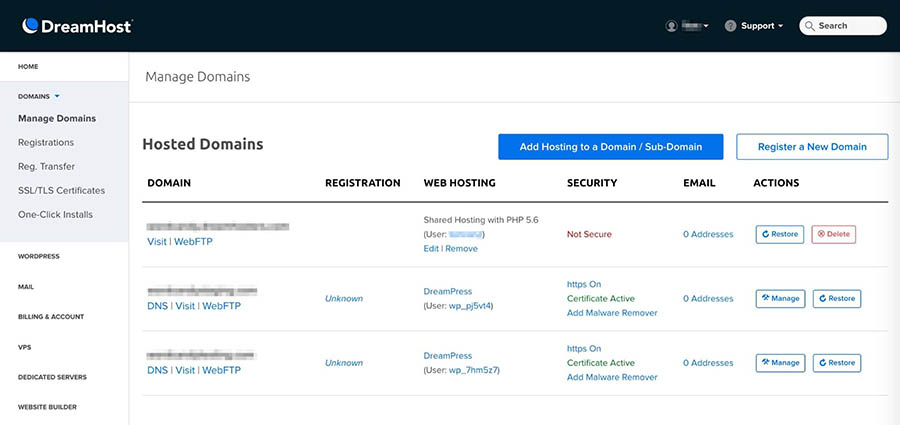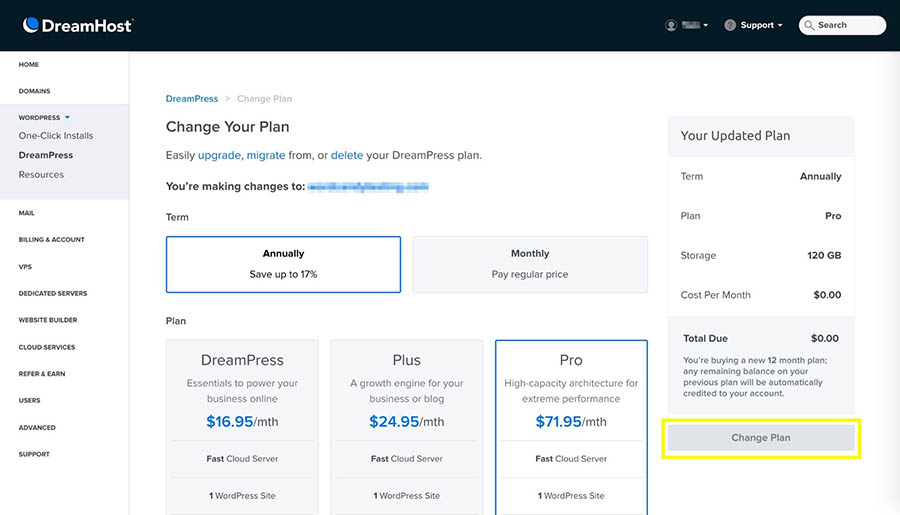What Is Shared Hosting? The Ultimate Guide for Beginners

When you’re tackling the launch of your very first website, hosting is one of the most critical but potentially confusing aspects. Understanding the differences between various hosting types and plans is crucial for your site’s success, as well as the health of your budget.
Fortunately, when you break it down, hosting isn’t as complicated as it first seems to be. After doing just a little research, you’ll be well equipped to choose the best hosting plan for you and your website.
In this post, we’ll focus on shared hosting, a popular choice for first-time website owners. Then we’ll discuss some things you may want to consider when determining whether shared hosting is the right choice for you. Let’s get started!
Shared Hosting That Powers Your Purpose
We make sure your website is fast, secure and always up so your visitors trust you. Plans start at $2.59/mo.

What Is Shared Hosting (And How Does It Work)?
The secret to understanding shared hosting lies right there in the name. With this type of hosting, your site shares a physical server with one or more other websites. To understand what that means and why it’s important, let’s discuss how servers and hosting work.
Every website on the internet is stored — or ‘hosted’ — on a server (a type of computer). This is how it becomes publicly available to users. When someone types a website’s URL into their browser, the browser uses that address to determine where the site is stored.
Then the browser requests information about the website from the server. The server provides all the necessary data, and the web page appears in the browser. After that, the user can interact with the site by navigating to other pages, clicking on links, filling out forms, and so on.
With shared hosting, one server stores all the files for several sites at once and is responsible for serving up information about them. This is the opposite of a dedicated server — a server that hosts just one specific website.
Since sites on a shared hosting server take up fewer resources than those on dedicated servers, shared hosting plans tend to be a lot less expensive. The host who owns the server also takes on the responsibility of maintaining it, which means less work for you. However, there are disadvantages as well, since sites can end up essentially competing for resources.
Still, shared hosting plans are a popular choice for beginners looking to host their first sites, and for good reason. The small monetary investment and lack of maintenance requirements make this type of hosting an intriguing option.
Is Shared Hosting Right for You? (4 Key Considerations)
Knowing what shared hosting is and how it works is one thing. Determining if it’s the best hosting solution for your website is another. Below, we’ve outlined four key considerations you should think about when deciding whether or not to go with a shared hosting plan.
1. What’s Your Budget, and Which Features Do You Need?
As we mentioned earlier, shared hosting plans tend to be less expensive than other types of hosting, such as a Virtual Private Server (VPS), cloud hosting, or dedicated hosting. Since you’re only using part of a server’s storage space and resources on a shared plan, your hosting provider can afford to offer lower costs.
For example, consider our shared hosting plans at DreamHost. The least expensive option starts at just $2.59 per month.

This is highly affordable, even for those who have little to invest in their website upfront. Compare this with our dedicated hosting plans.

While these costs are still affordable when compared to other hosts’ dedicated hosting plans, they’re much more expensive than shared hosting. If your site isn’t very large and doesn’t drive enough traffic to use up the disk space and resources on a dedicated server, it’s probably not cost-effective to purchase a dedicated plan just yet.
It’s also important to consider what features are available with any hosting plan you’re considering. For example, our shared plans come with a free domain, which makes setting up your site simpler. You can also add email services for as low as $1.67 per month.
When you consider the savings on these services, in addition to the low monthly cost of the hosting itself, a shared plan is by far the most budget-friendly option out there. If you don’t have a lot of money to throw at your site or you simply want to stick to a strict budget, shared hosting may be right for you.
Related: How Much Does It Cost to Build a Website?
2. What Are Your Technical Skills? How Easy-to-Use Is the Hosting Dashboard?
As a beginner, it’s possible that you may not be very experienced when it comes to managing a server. With a shared hosting plan, this responsibility is usually handled for you. This is helpful if your technical skills aren’t very advanced, or if you simply want to devote all of your time to maintaining the site itself.
You’ll also want to check out your potential web host’s control panel. It will be vital for performing troubleshooting, managing billing, upgrading your plan, and other significant tasks. Making sure yours is easy to navigate can simplify your site management process and save you from a lot of headaches down the line.
At DreamHost, our clients benefit from a custom control panel.

Its navigation is intuitive and easy to pick up. Even beginners shouldn’t have much trouble learning the ropes and getting their accounts set up just the way they like.
Finally, another consideration to think about when it comes to ease of use is the plan upgrade process that’s provided by your host. While shared plans are a smart place for most websites to start, as they grow, they usually need to be moved to another (more robust) hosting plan.
At DreamHost, we offer a simple one-click plan upgrade process. It’s accessible right from your control panel so that you can reach it at any time.

Hosting is a fundamental part of running your website, and you’ll likely have to access your hosting account frequently. Choosing a hosting provider that makes managing your account and maintaining your server easy is crucial if you want to use your time efficiently.
Related: When Should You Upgrade Your Hosting Plan?
3. How Large Is Your Website, and What Resources Does It Require?
As you now know, shared hosting involves two or more websites sharing a single server. Unfortunately, this can lead to a few problems that may have a significant impact on your website and its ability to succeed.
To start, shared hosting accounts provide limited storage space. If your website is somewhat large, shared hosting may not be right for you. What’s more, other sites on your server can grow and take up more storage space as well, pushing your website to the fringes.
The same applies to your website’s traffic level. If you start getting a lot of visitors to your site all at once, it’s more likely to overload your shared server than it would on a dedicated server. Likewise, a traffic spike on another site that shares your server could temporarily put your site out of commission.
Finally, other websites on your server can also affect your site’s performance. Their size and traffic levels could lead to slow loading times for your visitors, even if your pages are highly optimized.
For all of these reasons, you may want to look into Virtual Private Server (VPS) hosting plans as well.

As with a shared hosting plan, websites on a VPS share a server. However, each site has an allotted amount of space and resources, minimizing the impact other sites can have on your own. That makes it a balanced option in terms of price vs. resources.
4. What Restrictions Apply to Shared Hosting Plans?
In an attempt to prevent any one site on a shared server from using up more than its fair share of resources, your hosting provider may have usage restrictions. While they’re primarily in place to help users, in some cases they can cause issues if you don’t know what your site requires.
To be more specific, a website on a shared server will typically be subject to:
- Memory limits. Many web hosts constrict the bandwidth and other resources, such as server memory, that one site can use. If your site grows to the point where it’s taking up more than its share of resources, you may need to upgrade your hosting plan.
- File restrictions. In some cases, shared servers can become a security issue. If malware infects one site, it’s possible that it could spread to all the sites on the server. To prevent this, some providers place restrictions on the types of files you can upload to your site.
- Spam and hacker activity. Many web hosts carefully monitor activity on shared servers for security and performance reasons. If there is evidence of spam or hacker activity taking place on your site, your host may decide to temporarily or permanently disable it.
These restrictions could interfere with your ability to download specific plugins or carry out tasks such as sending emails directly from your server instead of through a third-party provider. However, if your site is an ideal candidate for shared hosting, these limitations shouldn’t be too much of a problem.
With that in mind, it’s important to remember that shared hosting is best for:
- Small business sites
- Blogs
- Portfolios
- Personal sites
- Database-driven sites
If your site falls into one of these categories, the restrictions placed on shared hosting shouldn’t impact you significantly.
Get Content Delivered Straight to Your Inbox
Subscribe to our blog and receive great content just like this delivered straight to your inbox.
Selecting a Shared Hosting Package
As a beginner, it can be confusing to sort out all the different kinds of web hosting that are available. Learning more about shared hosting providers and how this particular type of hosting works is essential if you want to make an informed decision when purchasing your first hosting plan.
Do you think a shared hosting plan is right for you and your site? Whether you’re a small-business owner, blogger, web designer, or developer, DreamHost offers one of the best low-cost, secure, and high-performing shared hosting solution on the market.
Our robust features include unlimited bandwidth and storage, access to our powerful 1-click installer, free privacy protection, a free SSL certificate, automated backups, and an instant WordPress setup. And if you upgrade to Shared Unlimited, we’ll also throw in a free domain name and a personalized email address to match. Choose your plan today!
